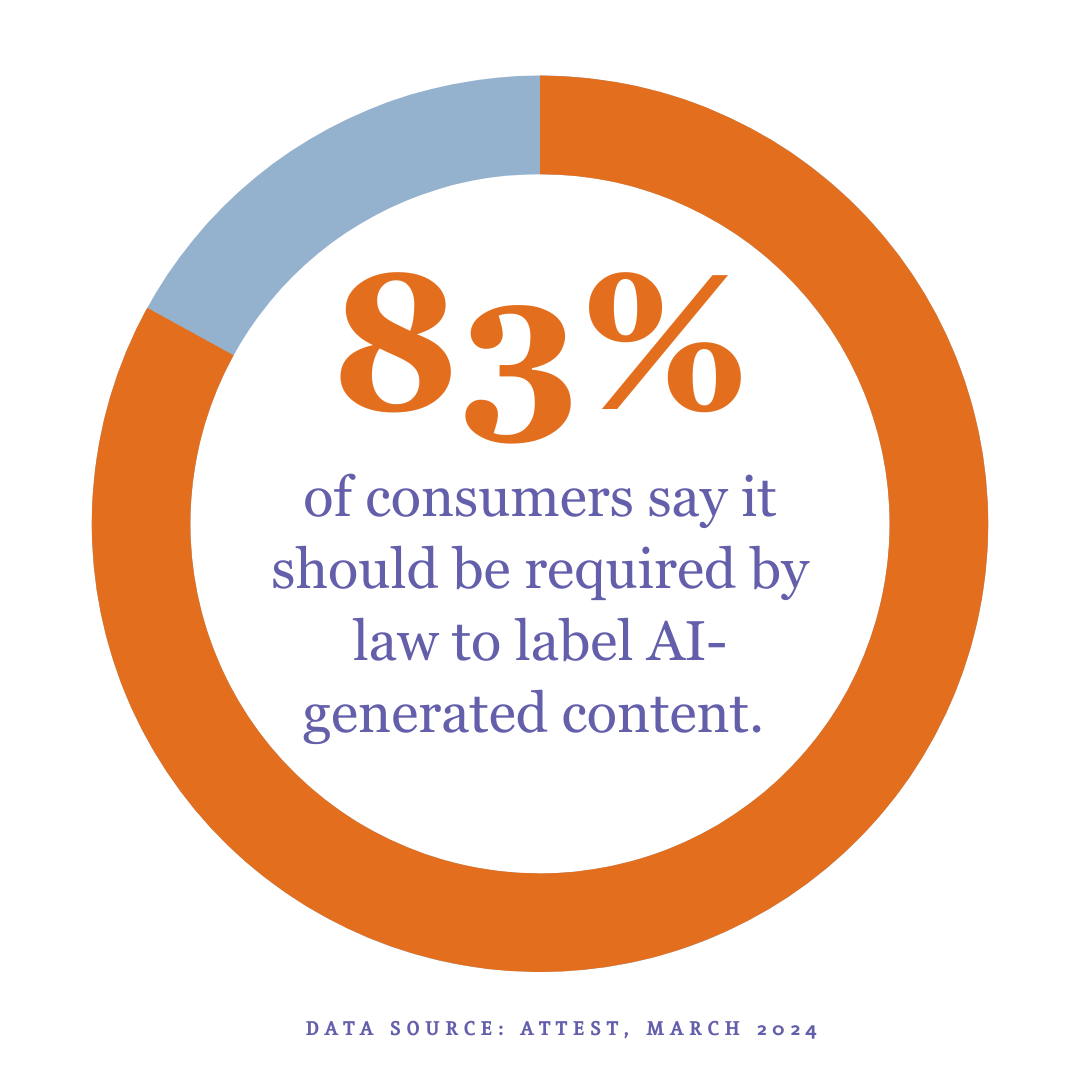Consumer research uncovers concern over use of AI-generated imagery
Editor’s note: Jennifer Armstrong is marketing director at market research firm Attest.
The need, and demand, for trust and authenticity in marketing has been a consistent theme for many years but its place in the spotlight is increasingly growing in recent times. The Black Lives Matter movement, the pandemic and now the rapid adoption of Al all represent critical moments in the last four years where brands were required to maintain, if not increase, their commitment to consumer trust and brand authenticity.
We’ve all witnessed brands miss the mark and the consumer backlash that ensues. And with AI showing no signs of slowing down in momentum, now is the time for marketers to decide their approach to using AI.
AI is hitting MarTech in a big way, and it offers brands the opportunity to save money. If you can create a slick video with a quick text prompt, and save on hiring a film crew, actors and locations, then why wouldn’t you? And why pay thousands to an influencer for one post, when you can enlist the likes of Alba Renai, Lil Miquela or Aitana López (AI generated influencers) for a fraction of the cost?
The appeal is obvious, but before brands rush in to adopt AI solutions, it’s important to consider the bigger picture. Research we undertook to understand how consumers perceive the use of AI in marketing – which included 9,500 consumers in the U.S., Canada, Mexico, U.K., Germany, France and the Netherlands – uncovered a high level of concern over the use of AI-generated imagery. What was striking was how difficult consumers find it to distinguish between what’s real and what’s not, and the impact that’s having on their desire for authenticity in marketing.
Can you trust your eyes? Consumers share thoughts on AI-generated images
We found only a quarter of survey respondents could correctly identify an AI-generated image (when shown alongside genuine marketing images), with the issue especially acute in shoppers over 40.
More than 71% of consumers admitted that they worry about being able to trust what they see or hear because of AI. It’s such a problem that nearly 83% say it should be required by law to label AI-generated content.
While brands might be excited by the creative possibilities presented by AI, it needs to be balanced by managing consumer expectations and not undermining their trust. Does your ad depict unrealistic product results, or suggest capabilities your product doesn’t have? Brands can’t take it for granted that images won’t be taken at face value.
When AI is used, transparency will be paramount. For example, including a disclaimer will be best practice even if it’s not mandated by law. Nearly 40% of consumers are worried about the possibility of being misled or misinformed by brands using AI. But this is only one of the reasons why they’re calling on brands and marketers to keep it real.
Consumers want to see real people in ads
The push for authenticity in advertising predates the advent of commercially available AI tools. You may remember Dove’s 2004 Real Beauty campaign launch. The initiative was a pushback at the use of unrealistic, unattainable images to promote cosmetics and fashion, and sought to challenge beauty stereotypes.
The campaign was a massive success and continues to guide Dove’s marketing today; in fact, Dove has vowed not to use AI-generated images to represent or replace real people. But not all brands will have such strong convictions, which threatens to undo the progress that’s been made in widening the definition of beauty.
Consumers overwhelmingly want to see real, untouched models in advertising, and nearly 70% say it’s important to them to see models that haven’t been digitally altered. Meanwhile, almost half state they don’t want to see AI-generated models in ads.
The main reasons consumers are opposed to AI-generated models is that they think it will take jobs from people (70.4%) and that it is inauthentic (53.0%). But another concern is that it could lead to unrealistic beauty standards (43.7%).
How can brands stand out in a sea of AI-generated content?
Even if brands can avoid alienating consumers with their AI ads, they might still bore them. It’s predicted that AI-generated content could soon account for 90% of what’s on the web. It’s inevitable that much of this content will look and feel the same, eventually becoming indistinguishable.
Brands that lean too heavily on AI in their marketing are in danger of losing the unique characteristics that make them “them.” This is why it will be vital to continue to invest in creativity, to take risks and do things differently. Brands that zig when everyone else is zagging will be the ones that stand out.
Consumer research will be especially valuable as marketing becomes more homogenized, allowing brands to identify what will cut through. For brand-side researchers who are working with marketing teams on upcoming campaigns, their focus should not only be on providing insights to spark creativity, but also on rigorously testing concepts.
When AI is used in marketing, brands need to understand the messaging consumers receive from it and be sure it represents their brand in an authentic and distinctly recognizable way.
On a positive note, 33% of consumers believe AI will lead to more creative advertising. Maybe it’s time to start experimenting?
Methodology
Data shared in this article are taken from research conducted on the Attest platform. The total sample size for “AI in the shopping experience: what consumers want” report was 9,500 working-age consumers from eight markets, including 2,000 based in the United States. The surveys were conducted during March 2024 and can be viewed here and here.
